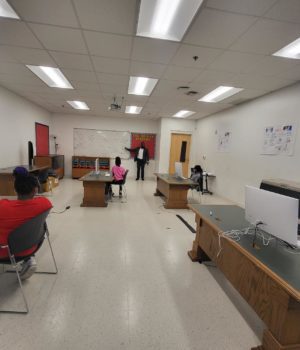Cyberbullying and Schools: New Tech Challenges Where School Oversight Ends. The Supreme Court Weighs In.
Traditional public school policies are failing in the face of new technology. Snapchat and other social media apps are pressing into the grey area of where public school oversight ends. Traditionally, it has been easy for schools to distinguish off-campus behavior from on-campus behavior. But what happens when a student makes a post off-campus and it affects life on-campus? This is the subject of the recent U.S. Supreme Court decision Mahanoy Area School District v. B. L. by & through Levy.
After sophomore B.L. was denied her preferred position on a private softball team and offered a junior varsity position on the school cheer team, she went off-campus to the Cocoa Hut, a local convenience store, and took to social media to vent her frustrations: “fuck school fuck softball fuck cheer fuck everything”. A second post was made: “Love how me and [another student] get told we need a year of jv before we make varsity but tha[t] doesn’t matter to anyone else?” The second post also used an upside-down smiley face emoji. These posts circulated around the school and reached the attention of the cheerleading coaches via a student whose mother was a coach. Members of the cheer team were upset and their questions spilled over into the classroom, disrupting a cheer coach’s algebra class for 5 to 10 minutes. After a discussion with the principal, the coaches decided that the student broke team and school rules and suspended the sophomore from cheer for the upcoming year. The student apologized but the decision was upheld; the student filed suit where it was appealed all the way to the Supreme Court. In an eight to one majority, the U.S. Supreme Court ruled the school district could not regulate off-campus speech by a public-school student without a substantial disruption on campus.
What does the Court’s ruling mean for future school cyberbullying policies? The key takeaway is that the type of cyberbullying policy the school uses matters. There are traditionally four categories of school policy that a school can use to step in and censor a student’s right to speech: If a student’s speech is severely disruptive to school operations or the rights of others; if the speech is plainly offensive; if the speech poses a danger to students or advocates for drug use; if a student’s speech involves the unauthorized use of the school’s official license. New school cyberbullying policies will most likely focus on the first category.
Substantially disruptive speech is the broadest category applicable to most cyberbullying scenarios. Mahanoy illustrates that a few students being upset is not enough to be severely disruptive. Nor is a class being disrupted for ten minutes. Previous court cases show that severely disruptive means students missing school because of cyberbullying or physical altercations occurring because of bullying. Mahanoy provides clarification for when off-campus actions aren’t enough of a substantial disturbance on campus for a school to regulate a student’s off-campus speech. New school cyberbullying policies should state that a substantial disturbance must impact campus life for the victim and provide relevant examples of what these cases might look like, such as students missing classes or an event that causes students to seek counseling.
The Supreme Court made clear that disagreeable opinions are to be protected under the First Amendment; a speaker shouldn’t be punished based on how an audience may react to the speaker’s ideas. Although B.L. didn’t handle her rejection with grace, according to the Court her reaction didn’t warrant the punishment of the school. New school cyberbullying policies should be crafted around the substantial disturbance felt on campus. These types of policies are the broadest and most applicable to bullying scenarios. New technology is always changing how we communicate, vent our frustrations, and impact each other’s lives. School policies should be adaptable to these technological changes to regulate speech. Without updated cyberbullying policies, a public school will be subject to social media posts from upset students with no clear path forward.
This article was written with the help of Matthew Coughlin. Matthew Coughlin is a law clerk at the law firm of Zarwin Baum DeVito Kaplan Schaer Toddy, P.C. and is starting his third year at the Boston College Law School. He has an interest in First Amendment and related privacy issues.


